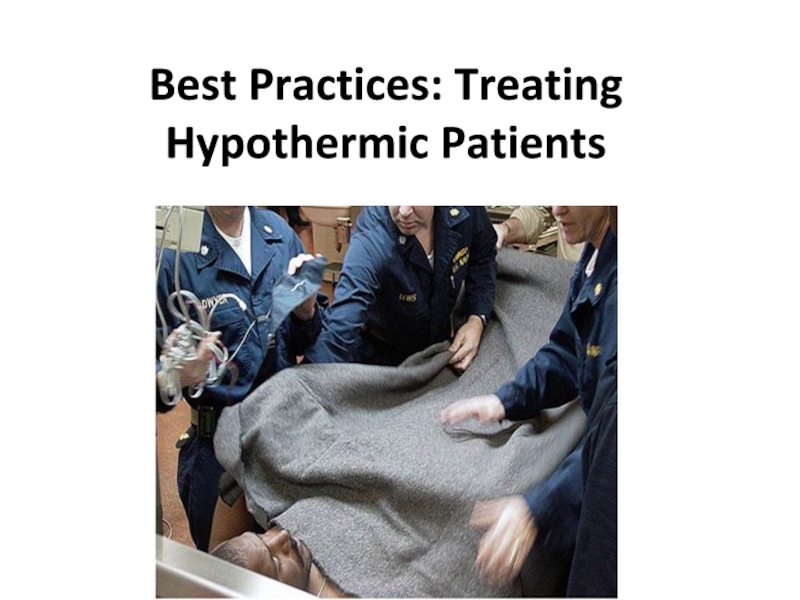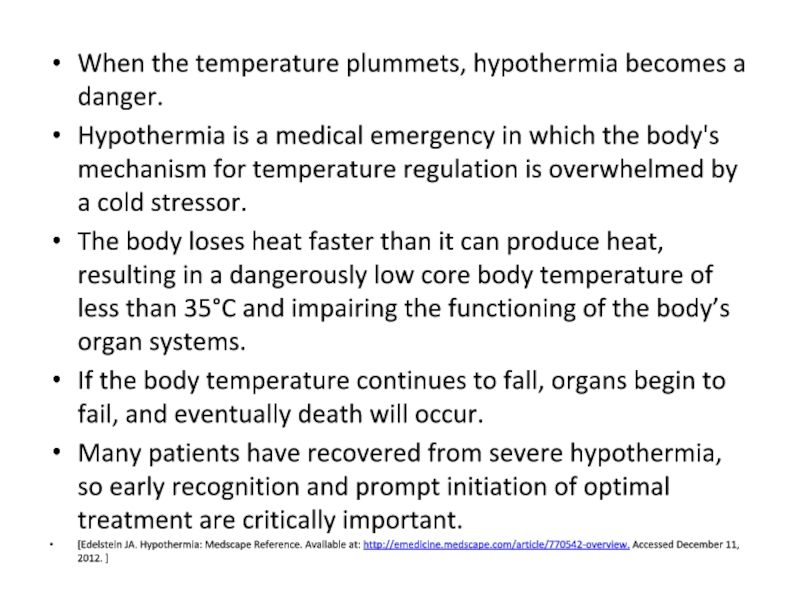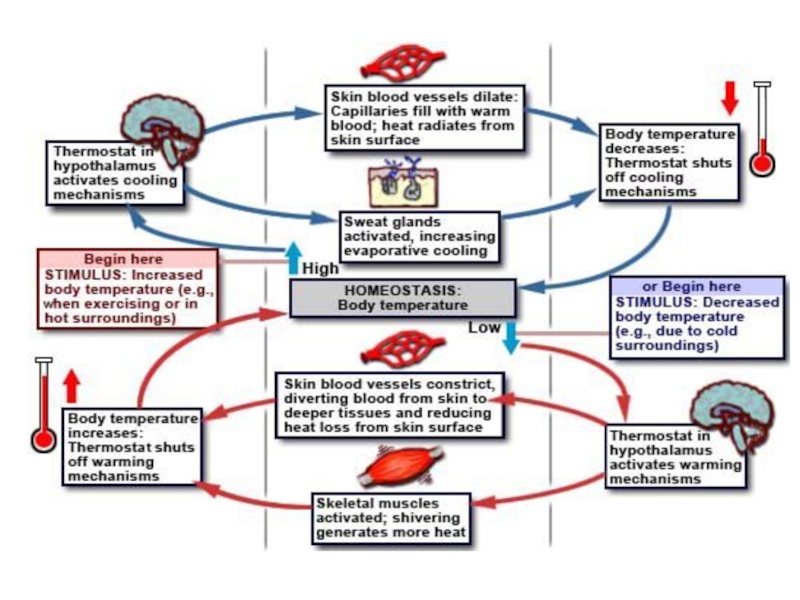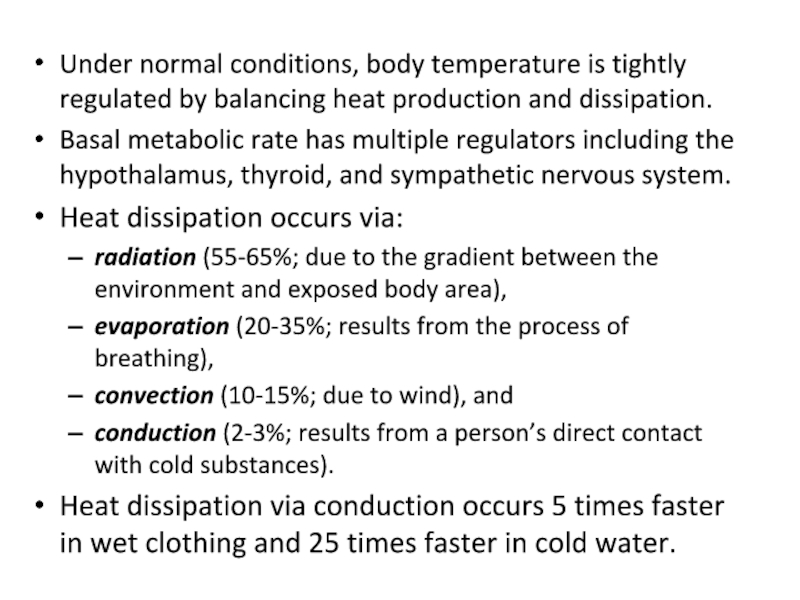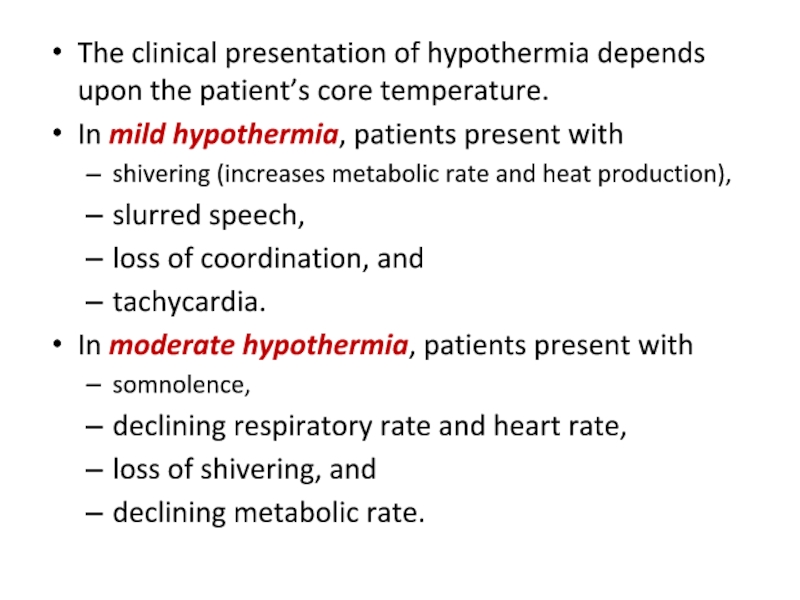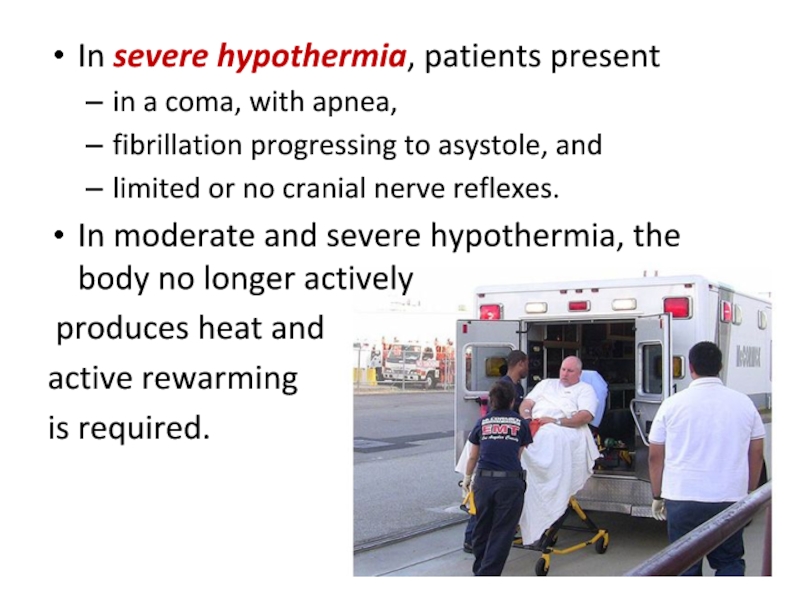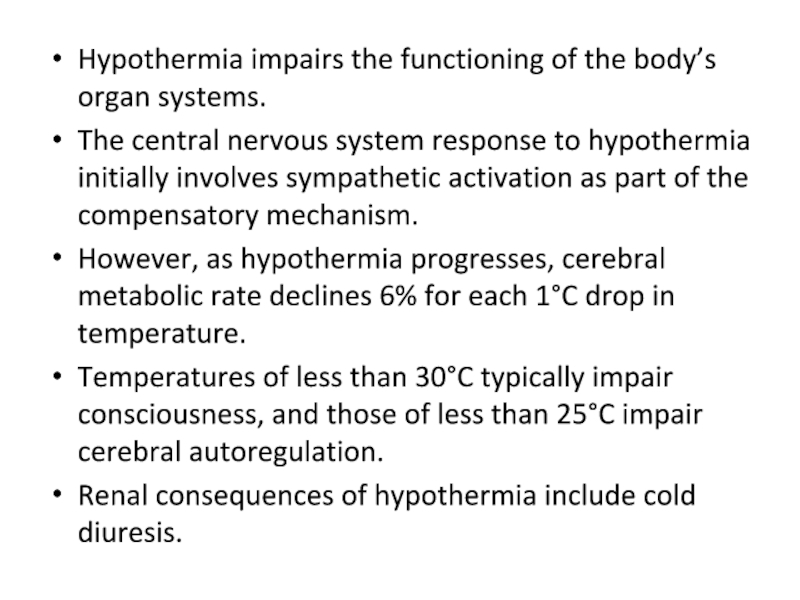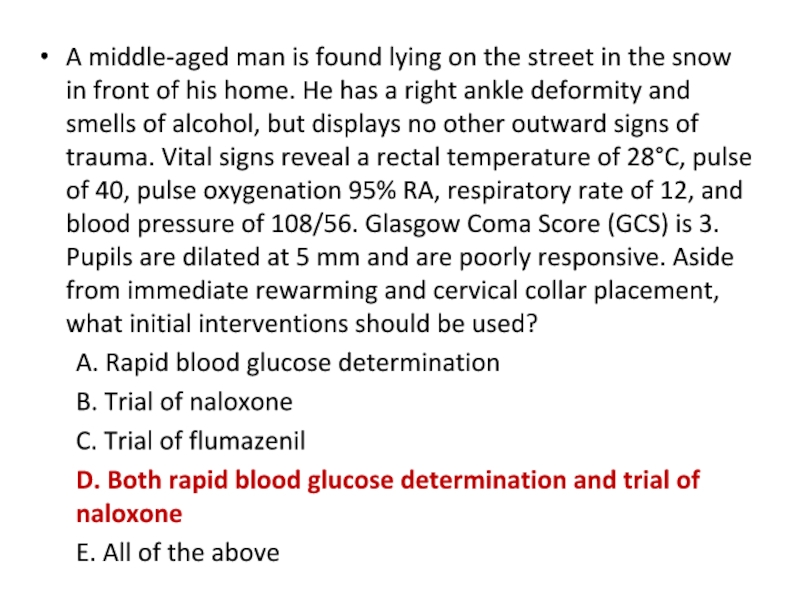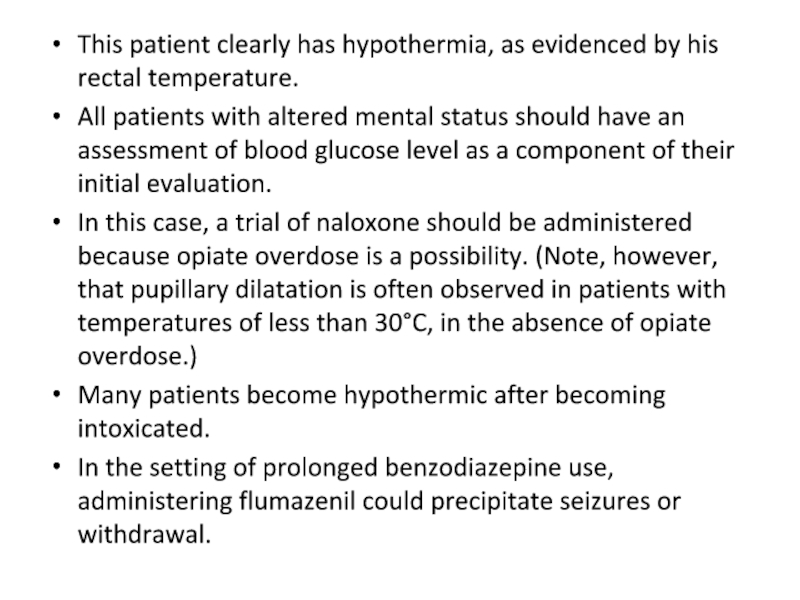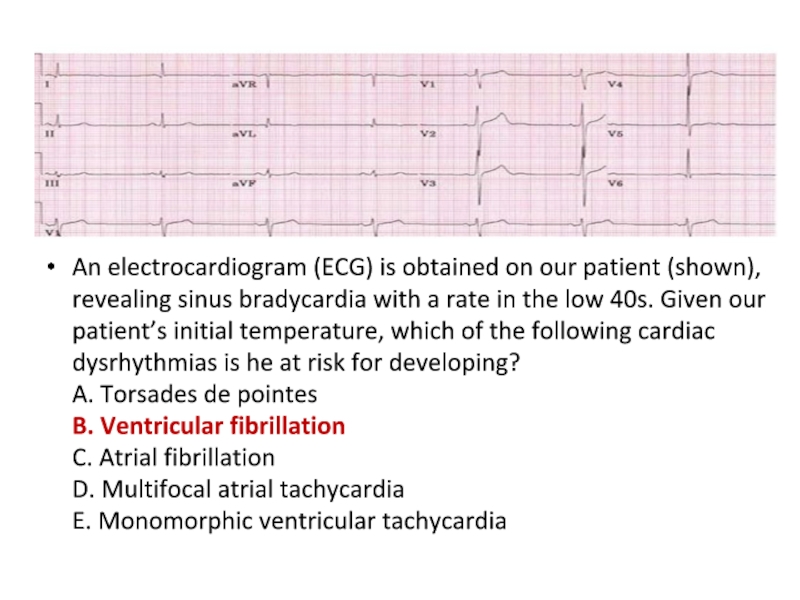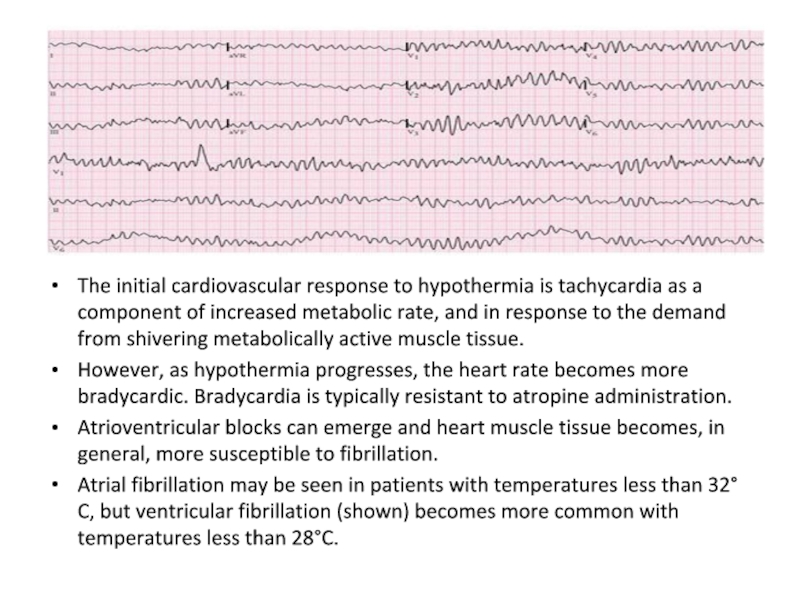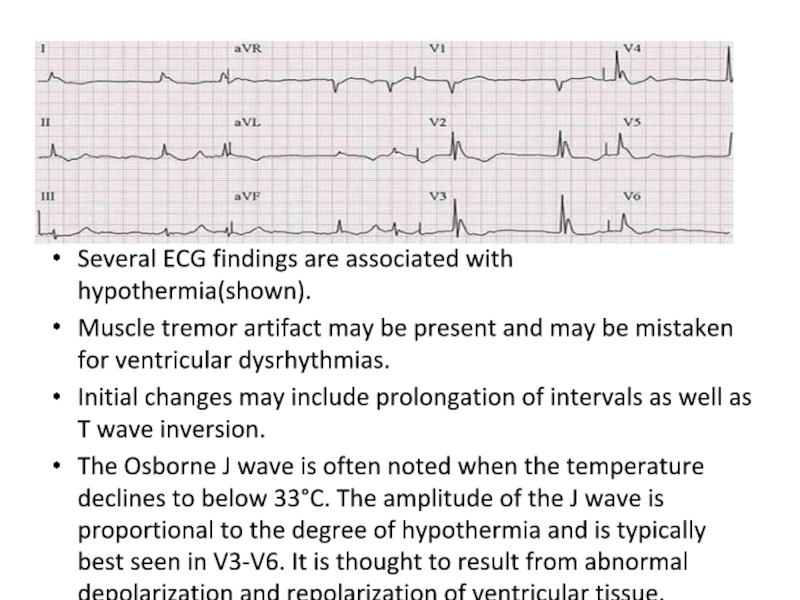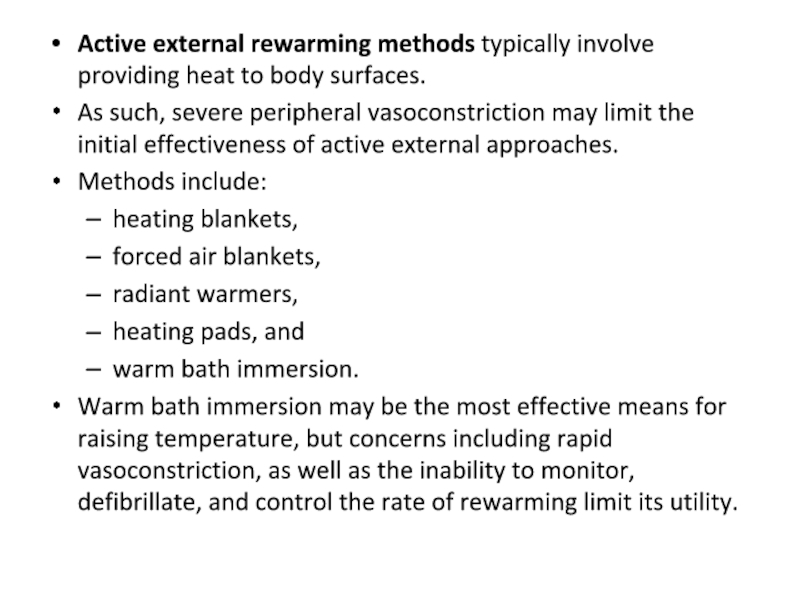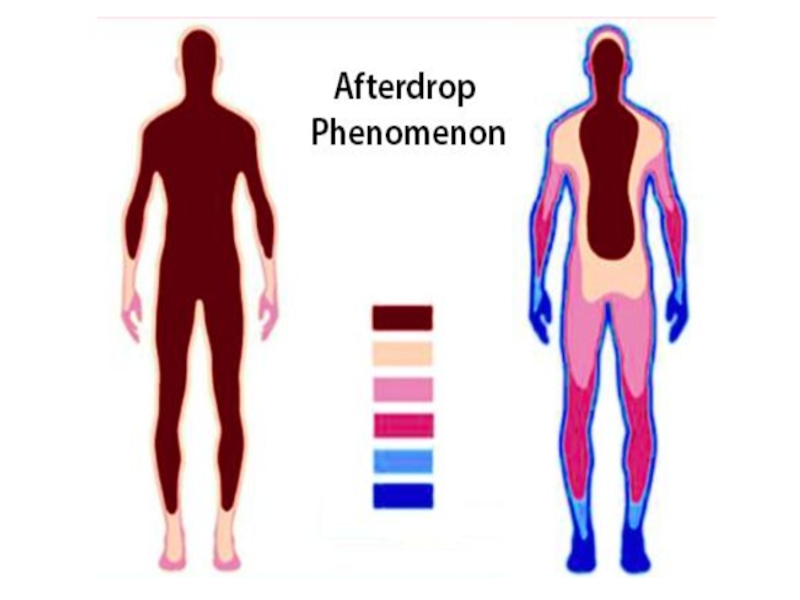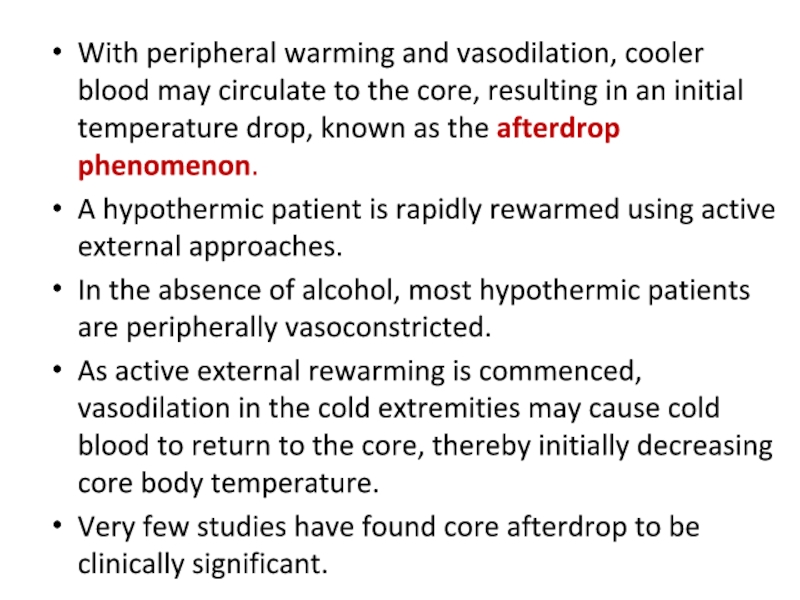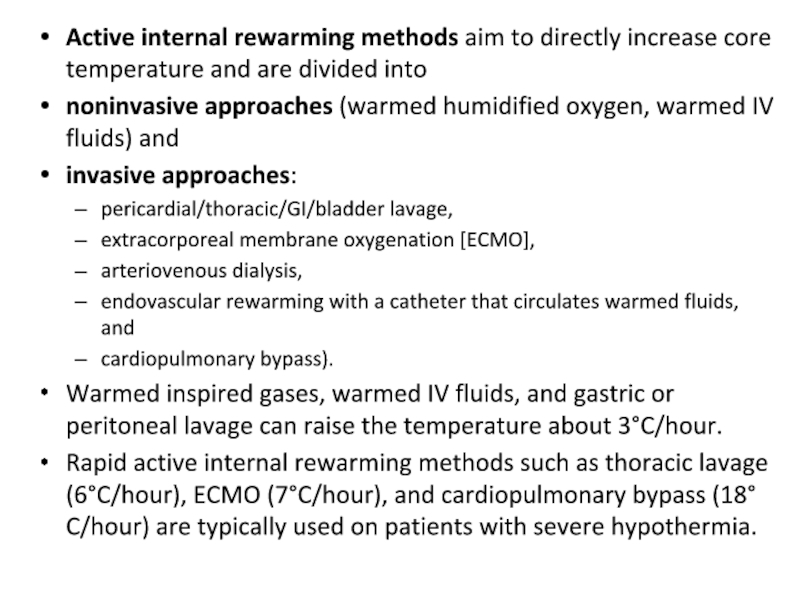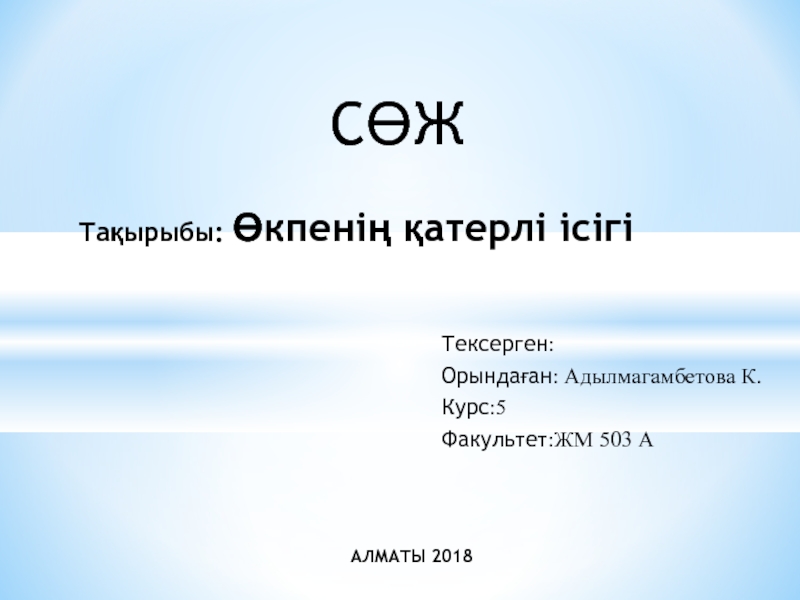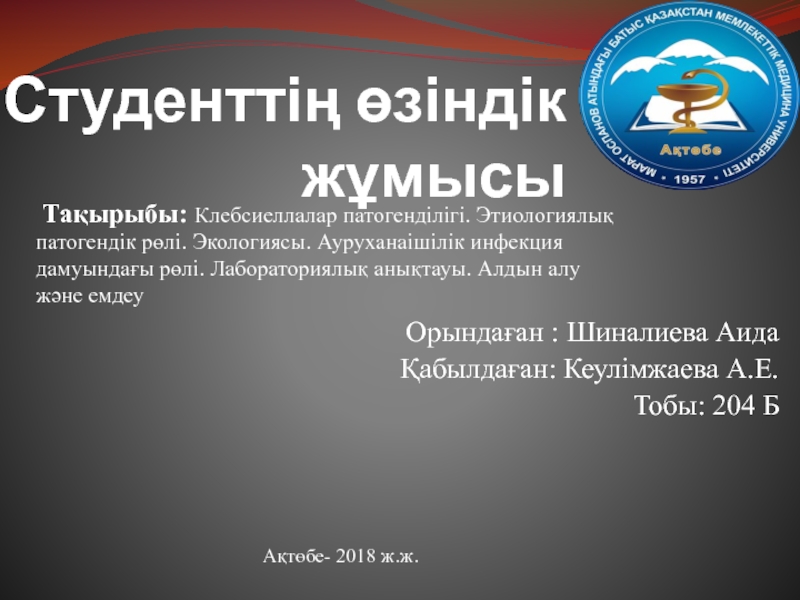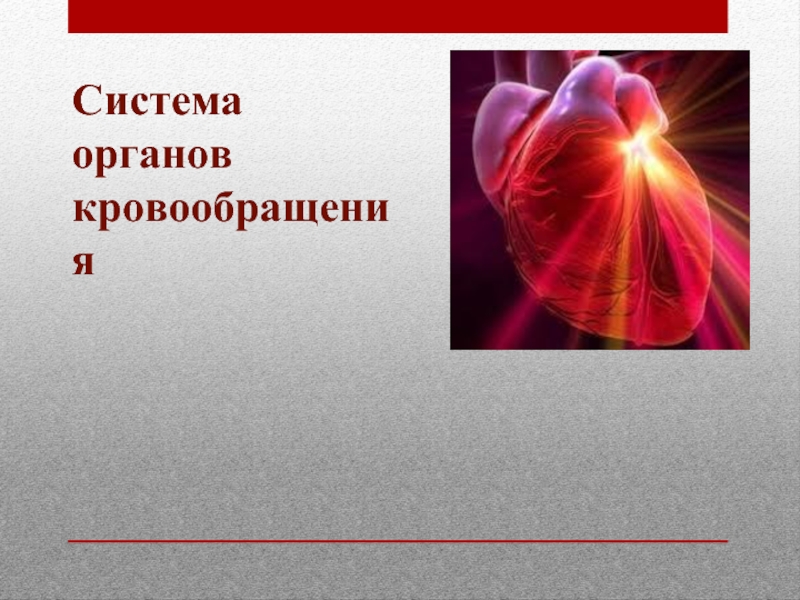- Главная
- Разное
- Дизайн
- Бизнес и предпринимательство
- Аналитика
- Образование
- Развлечения
- Красота и здоровье
- Финансы
- Государство
- Путешествия
- Спорт
- Недвижимость
- Армия
- Графика
- Культурология
- Еда и кулинария
- Лингвистика
- Английский язык
- Астрономия
- Алгебра
- Биология
- География
- Детские презентации
- Информатика
- История
- Литература
- Маркетинг
- Математика
- Медицина
- Менеджмент
- Музыка
- МХК
- Немецкий язык
- ОБЖ
- Обществознание
- Окружающий мир
- Педагогика
- Русский язык
- Технология
- Физика
- Философия
- Химия
- Шаблоны, картинки для презентаций
- Экология
- Экономика
- Юриспруденция
Best Practices: Treating Hypothermic Patients презентация
Содержание
- 1. Best Practices: Treating Hypothermic Patients
- 2. When the temperature plummets, hypothermia becomes a
- 3. The rate of hypothermia-related deaths in the
- 5. Under normal conditions, body temperature is tightly
- 6. The clinical presentation of hypothermia depends upon
- 7. In severe hypothermia, patients present in
- 8. Hypothermia impairs the functioning of the body’s
- 9. Peripheral vasoconstriction shunts blood to the core,
- 10. A middle-aged man is found lying on
- 12. This patient clearly has hypothermia, as evidenced
- 13. An
- 14. The initial cardiovascular response
- 15. Several ECG findings are associated
- 16. The definitive treatment for hypothermia is rewarming
- 17. Passive external rewarming focuses on reducing heat
- 18. Active external rewarming methods typically involve providing
- 20. With peripheral warming and vasodilation, cooler blood
- 22. Active internal rewarming methods aim to directly
- 24. Aggressive resuscitation efforts are generally indicated, even
Слайд 2When the temperature plummets, hypothermia becomes a danger.
Hypothermia is a
medical emergency in which the body's mechanism for temperature regulation is overwhelmed by a cold stressor.
The body loses heat faster than it can produce heat, resulting in a dangerously low core body temperature of less than 35°C and impairing the functioning of the body’s organ systems.
If the body temperature continues to fall, organs begin to fail, and eventually death will occur.
Many patients have recovered from severe hypothermia, so early recognition and prompt initiation of optimal treatment are critically important.
[Edelstein JA. Hypothermia: Medscape Reference. Available at: http://emedicine.medscape.com/article/770542-overview. Accessed December 11, 2012. ]
The body loses heat faster than it can produce heat, resulting in a dangerously low core body temperature of less than 35°C and impairing the functioning of the body’s organ systems.
If the body temperature continues to fall, organs begin to fail, and eventually death will occur.
Many patients have recovered from severe hypothermia, so early recognition and prompt initiation of optimal treatment are critically important.
[Edelstein JA. Hypothermia: Medscape Reference. Available at: http://emedicine.medscape.com/article/770542-overview. Accessed December 11, 2012. ]
Слайд 3The rate of hypothermia-related deaths in the U.S. increases with age
(shown per 100,000 population; data from 2001).
A patient’s degree of hypothermia is defined by his/her core body temperature:
mild hypothermia (32°C-35°C),
moderate hypothermia (28°C-32°C),
severe hypothermia (less than 28°C).
Primary hypothermia results from
exposure to cold, which overwhelms
the body’s compensatory
mechanisms to maintain physiologic
temperature.
Secondary hypothermia has
multiple causes (typically metabolic),
including:
sepsis,
hypothyroidism,
burns, and
hypothalamic disorders.
A patient’s degree of hypothermia is defined by his/her core body temperature:
mild hypothermia (32°C-35°C),
moderate hypothermia (28°C-32°C),
severe hypothermia (less than 28°C).
Primary hypothermia results from
exposure to cold, which overwhelms
the body’s compensatory
mechanisms to maintain physiologic
temperature.
Secondary hypothermia has
multiple causes (typically metabolic),
including:
sepsis,
hypothyroidism,
burns, and
hypothalamic disorders.
Слайд 5Under normal conditions, body temperature is tightly regulated by balancing heat
production and dissipation.
Basal metabolic rate has multiple regulators including the hypothalamus, thyroid, and sympathetic nervous system.
Heat dissipation occurs via:
radiation (55-65%; due to the gradient between the environment and exposed body area),
evaporation (20-35%; results from the process of breathing),
convection (10-15%; due to wind), and
conduction (2-3%; results from a person’s direct contact with cold substances).
Heat dissipation via conduction occurs 5 times faster in wet clothing and 25 times faster in cold water.
Basal metabolic rate has multiple regulators including the hypothalamus, thyroid, and sympathetic nervous system.
Heat dissipation occurs via:
radiation (55-65%; due to the gradient between the environment and exposed body area),
evaporation (20-35%; results from the process of breathing),
convection (10-15%; due to wind), and
conduction (2-3%; results from a person’s direct contact with cold substances).
Heat dissipation via conduction occurs 5 times faster in wet clothing and 25 times faster in cold water.
Слайд 6The clinical presentation of hypothermia depends upon the patient’s core temperature.
In mild hypothermia, patients present with
shivering (increases metabolic rate and heat production),
slurred speech,
loss of coordination, and
tachycardia.
In moderate hypothermia, patients present with
somnolence,
declining respiratory rate and heart rate,
loss of shivering, and
declining metabolic rate.
Слайд 7In severe hypothermia, patients present
in a coma, with apnea,
fibrillation
progressing to asystole, and
limited or no cranial nerve reflexes.
In moderate and severe hypothermia, the body no longer actively
produces heat and
active rewarming
is required.
limited or no cranial nerve reflexes.
In moderate and severe hypothermia, the body no longer actively
produces heat and
active rewarming
is required.
Слайд 8Hypothermia impairs the functioning of the body’s organ systems.
The central
nervous system response to hypothermia initially involves sympathetic activation as part of the compensatory mechanism.
However, as hypothermia progresses, cerebral metabolic rate declines 6% for each 1°C drop in temperature.
Temperatures of less than 30°C typically impair consciousness, and those of less than 25°C impair cerebral autoregulation.
Renal consequences of hypothermia include cold diuresis.
However, as hypothermia progresses, cerebral metabolic rate declines 6% for each 1°C drop in temperature.
Temperatures of less than 30°C typically impair consciousness, and those of less than 25°C impair cerebral autoregulation.
Renal consequences of hypothermia include cold diuresis.
Слайд 9Peripheral vasoconstriction shunts blood to the core, producing a relative increase
in preglomerular pressure.
This reduces sodium and water reabsorption, leading to diuresis.
This reduces sodium and water reabsorption, leading to diuresis.
Слайд 10A middle-aged man is found lying on the street in the
snow in front of his home. He has a right ankle deformity and smells of alcohol, but displays no other outward signs of trauma. Vital signs reveal a rectal temperature of 28°C, pulse of 40, pulse oxygenation 95% RA, respiratory rate of 12, and blood pressure of 108/56. Glasgow Coma Score (GCS) is 3. Pupils are dilated at 5 mm and are poorly responsive. Aside from immediate rewarming and cervical collar placement, what initial interventions should be used?
A. Rapid blood glucose determination
B. Trial of naloxone
C. Trial of flumazenil
D. Both rapid blood glucose determination and trial of naloxone
E. All of the above
A. Rapid blood glucose determination
B. Trial of naloxone
C. Trial of flumazenil
D. Both rapid blood glucose determination and trial of naloxone
E. All of the above
Слайд 12This patient clearly has hypothermia, as evidenced by his rectal temperature.
All patients with altered mental status should have an assessment of blood glucose level as a component of their initial evaluation.
In this case, a trial of naloxone should be administered because opiate overdose is a possibility. (Note, however, that pupillary dilatation is often observed in patients with temperatures of less than 30°C, in the absence of opiate overdose.)
Many patients become hypothermic after becoming intoxicated.
In the setting of prolonged benzodiazepine use, administering flumazenil could precipitate seizures or withdrawal.
Слайд 13
An electrocardiogram (ECG) is obtained on our patient (shown), revealing sinus
bradycardia with a rate in the low 40s. Given our patient’s initial temperature, which of the following cardiac dysrhythmias is he at risk for developing?
A. Torsades de pointes
B. Ventricular fibrillation
C. Atrial fibrillation
D. Multifocal atrial tachycardia
E. Monomorphic ventricular tachycardia
Слайд 14
The initial cardiovascular response to hypothermia is tachycardia as a component
of increased metabolic rate, and in response to the demand from shivering metabolically active muscle tissue.
However, as hypothermia progresses, the heart rate becomes more bradycardic. Bradycardia is typically resistant to atropine administration.
Atrioventricular blocks can emerge and heart muscle tissue becomes, in general, more susceptible to fibrillation.
Atrial fibrillation may be seen in patients with temperatures less than 32°C, but ventricular fibrillation (shown) becomes more common with temperatures less than 28°C.
However, as hypothermia progresses, the heart rate becomes more bradycardic. Bradycardia is typically resistant to atropine administration.
Atrioventricular blocks can emerge and heart muscle tissue becomes, in general, more susceptible to fibrillation.
Atrial fibrillation may be seen in patients with temperatures less than 32°C, but ventricular fibrillation (shown) becomes more common with temperatures less than 28°C.
Слайд 15
Several ECG findings are associated with hypothermia(shown).
Muscle tremor artifact may be
present and may be mistaken for ventricular dysrhythmias.
Initial changes may include prolongation of intervals as well as T wave inversion.
The Osborne J wave is often noted when the temperature declines to below 33°C. The amplitude of the J wave is proportional to the degree of hypothermia and is typically best seen in V3-V6. It is thought to result from abnormal depolarization and repolarization of ventricular tissue.
Initial changes may include prolongation of intervals as well as T wave inversion.
The Osborne J wave is often noted when the temperature declines to below 33°C. The amplitude of the J wave is proportional to the degree of hypothermia and is typically best seen in V3-V6. It is thought to result from abnormal depolarization and repolarization of ventricular tissue.
Слайд 16The definitive treatment for hypothermia is rewarming of the patient.
Rewarming
approaches are categorized as “passive external,” “active external,” or “active internal”
Слайд 17Passive external rewarming focuses on reducing heat loss and allowing normal
physiologic compensatory mechanisms to arrest the temperature decline. This approach (when used in isolation) is indicated only for mild hypothermia when shivering and other compensatory measures are effective.
Passive external rewarming includes removing the patient from the cold environment (e.g., removing wet clothes) and providing a blanket or warm clothes.
The rewarming rate is 0.5°C-2.0°C/hour.
Passive external rewarming includes removing the patient from the cold environment (e.g., removing wet clothes) and providing a blanket or warm clothes.
The rewarming rate is 0.5°C-2.0°C/hour.
Слайд 18Active external rewarming methods typically involve providing heat to body surfaces.
As such, severe peripheral vasoconstriction may limit the initial effectiveness of active external approaches.
Methods include:
heating blankets,
forced air blankets,
radiant warmers,
heating pads, and
warm bath immersion.
Warm bath immersion may be the most effective means for raising temperature, but concerns including rapid vasoconstriction, as well as the inability to monitor, defibrillate, and control the rate of rewarming limit its utility.
Слайд 20With peripheral warming and vasodilation, cooler blood may circulate to the
core, resulting in an initial temperature drop, known as the afterdrop phenomenon.
A hypothermic patient is rapidly rewarmed using active external approaches.
In the absence of alcohol, most hypothermic patients are peripherally vasoconstricted.
As active external rewarming is commenced, vasodilation in the cold extremities may cause cold blood to return to the core, thereby initially decreasing core body temperature.
Very few studies have found core afterdrop to be clinically significant.
A hypothermic patient is rapidly rewarmed using active external approaches.
In the absence of alcohol, most hypothermic patients are peripherally vasoconstricted.
As active external rewarming is commenced, vasodilation in the cold extremities may cause cold blood to return to the core, thereby initially decreasing core body temperature.
Very few studies have found core afterdrop to be clinically significant.
Слайд 22Active internal rewarming methods aim to directly increase core temperature and
are divided into
noninvasive approaches (warmed humidified oxygen, warmed IV fluids) and
invasive approaches:
pericardial/thoracic/GI/bladder lavage,
extracorporeal membrane oxygenation [ECMO],
arteriovenous dialysis,
endovascular rewarming with a catheter that circulates warmed fluids, and
cardiopulmonary bypass).
Warmed inspired gases, warmed IV fluids, and gastric or peritoneal lavage can raise the temperature about 3°C/hour.
Rapid active internal rewarming methods such as thoracic lavage (6°C/hour), ECMO (7°C/hour), and cardiopulmonary bypass (18°C/hour) are typically used on patients with severe hypothermia.
noninvasive approaches (warmed humidified oxygen, warmed IV fluids) and
invasive approaches:
pericardial/thoracic/GI/bladder lavage,
extracorporeal membrane oxygenation [ECMO],
arteriovenous dialysis,
endovascular rewarming with a catheter that circulates warmed fluids, and
cardiopulmonary bypass).
Warmed inspired gases, warmed IV fluids, and gastric or peritoneal lavage can raise the temperature about 3°C/hour.
Rapid active internal rewarming methods such as thoracic lavage (6°C/hour), ECMO (7°C/hour), and cardiopulmonary bypass (18°C/hour) are typically used on patients with severe hypothermia.
Слайд 24Aggressive resuscitation efforts are generally indicated, even in the presence of
cardiac dysrhythmia or cardiac arrest.
Clinicians are concerned that endotracheal intubation will precipitate malignant ventricular dysrhythmias, but this has not been borne out by the literature.
Intubation should not be withheld for this fear.
For patients with a temperature below 30°C, advanced cardiac life support (ACLS) medications are not indicated because their metabolism is incomplete and excessive dosing may lead to toxic accumulation.
If core body temperature is below 30°C, one defibrillatory shock should be attempted and resuscitation should then be used to a temperature above 30°C.
Clinicians are concerned that endotracheal intubation will precipitate malignant ventricular dysrhythmias, but this has not been borne out by the literature.
Intubation should not be withheld for this fear.
For patients with a temperature below 30°C, advanced cardiac life support (ACLS) medications are not indicated because their metabolism is incomplete and excessive dosing may lead to toxic accumulation.
If core body temperature is below 30°C, one defibrillatory shock should be attempted and resuscitation should then be used to a temperature above 30°C.
